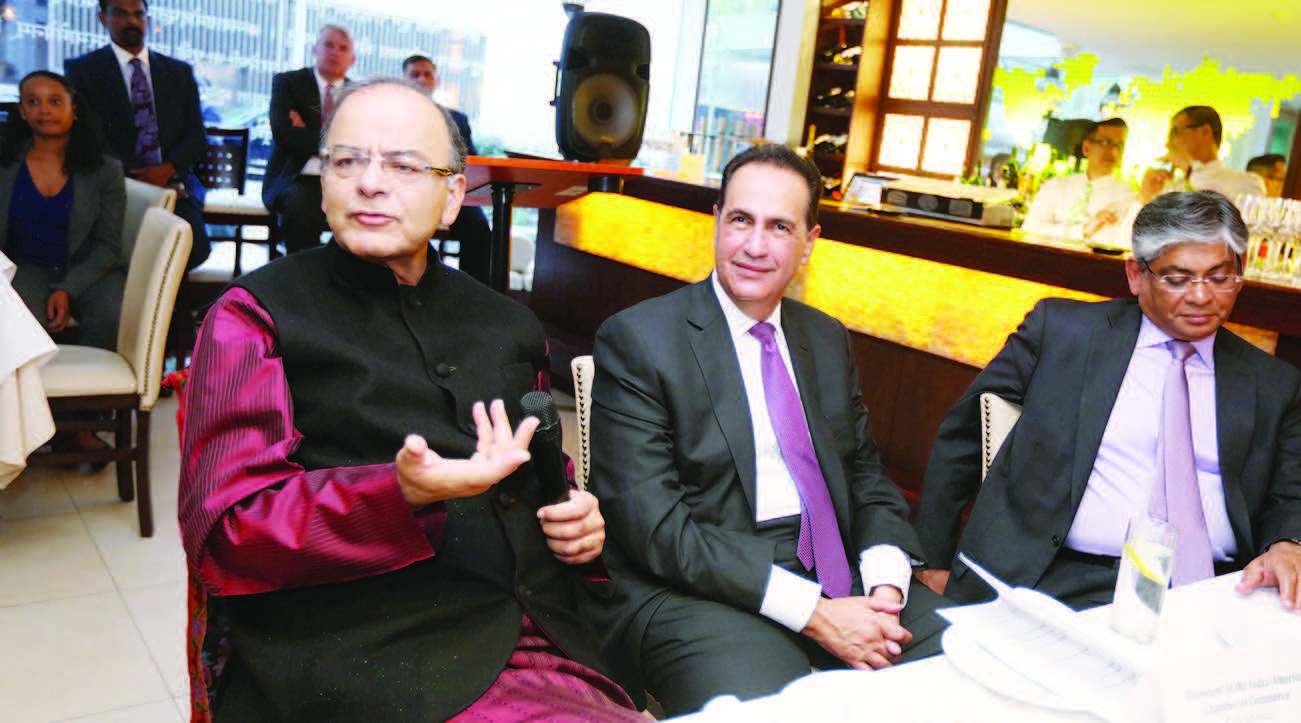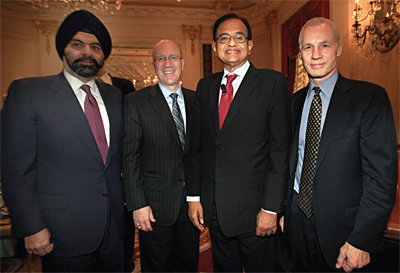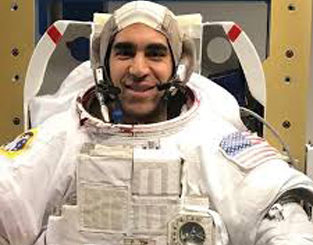
NEW YORK CITY (TIP): India-America Chamber of Commerce (IACC) hosted, April 19, an evening reception for, Arun Jaitley, Finance Minister of India, during his visit to United States for thebilateral annual yearly financial and partnership meeting with the secretary of treasury in WashingtonDC. The meeting was held at the finest Indian restaurant, Tulsi, for the members of the chamber,prominent business leaders, press and government officials.
“India has emerged as a major growth engine of the world, “said Rajiv Khanna, President of IACC andPartner of BakerHostetler in his opening remarks. Rajiv highlighted the finance minister’s achievementsand records over the last two years:
- Reduction in fiscal deficit;
- Controlling Inflation;
- Foreign direct investment has gone up by over 40%;
- GDP growth rate has gone up by more than 2%; and
- Progressive opening of the Indian economy to foreign direct investment and liberalization of thecontrols that were choking its growth.
“According to the CFA Institute, the global economy is expected to grow at growth rate of 2.6% in 2016.
The United States is expected to contribute 42% of this global growth, China is expected to contribute28% of this growth, India is expected to contribute 25% of this growth, Germany is expected tocontribute 3% of this growth and the rest of the world is expected to contribute 2% of this growth. Inother words, while most of the world is struggling with negative growth rates, India has emerged as amajor growth engine of the world, “said Rajiv. “We are very fortunate to have with us today the FinanceMinister of this major global growth engine, the Honorable Arun Jaitley.”
Rajiv further highlighted the successes of Finance Minister:
- “Two years ago, when Arun was sworn in as the Finance Minister of India, the fiscal deficit of India was about 4.5%. Today, it is 3.99%. This reduction in the fiscal deficit has taken place in spite of significant and continuous reduction in tax rates in India.
- When Arun became the Finance Minister, India was plagued with high inflation as a result of which India’s inflation hawk federal reserve would not even think of cutting down interest rates, thereby plaguing the industry with high interest rates at a time when it needed a financial breather. Today, the inflation in India is under control. In the last 16 months, the wholesale index has been mostly negative and the consumer index has been in the range of 4-5%, which has persuaded India’s tough federal reserve to bring down the interest rates, which in turn will spur further growth in India.
- In the last two years, the foreign direct investment in India has grown by over 40%.
- In the last two years, India’s GDP rate has grown by at least 2% and is expected to keep moving upwards.
- In each of the budgets presented by Arun, he has progressively opened the Indian economy to foreign direct investment and liberalized the controls that stifled the growth of the economy.
We are honored today to welcome Honorable Arun Jaitley, Finance Minister of India.”
“I have had the privilege of knowing Rajiv for a very long time, in fact more than three and one-halfdecades. Even after moving to US he has kept in touch,” said Honorable Arun Jaitley to the audience. “Iam extremely grateful that Rajiv has put together this gathering.
The whole world is facing serious challenges and so is India. Today, no one can ignore the fact that wehave a large population and significant part of that population still suffers from poverty. However, thegrowth does not necessarily mean affluence for some, growth in India is necessary because the benefitsof that growth have to first move towards poverty eradication, growth generates wealth and that in turngets used for all segments of the society. Particularly, the Indian model has been not only aboutpercolating down to weaker sections but states with enriched revenues that have to formulate povertyeradication programs to further help the weaker sections of the society.So, without growth, we will only have empty slogans, the kind we had in 1970s where we had veryprogressive slogans but were growing only by about 2.5%. And the world use to ridicule our growth by calling it the Hindu rate of growth. Though in the last two decades the situation has substantially changed, India has huge potential for pushing up growth on the strength of economic activity.”
He stated further, “we should bear in mind when Rajiv was giving figures of what various countries inthe world contribute to global growth – China for almost three decades grew at an average of 9.5% andfor 30 years to grow at that pace, it did shoulder about 50% of the global growth and that is somethingthat cannot be indefinitely expected. The Chinese model, which has been a state driven growth model,rather than an entrepreneur driven model of growth, is of course facing its own challenges of excesscapacity. It was export based and with the slowdown of global economy obviously the export world hasshrunk, trade has shrunk and China therefore is going through a transformation and in thattransformation they now believe that they may switch over to a domestic consumption economy ratherthan only export. But this transformation will obviously take time and therefore the Chinese did believelast year that the new Chinese normal was 7.5% growth. It has come down to 7% but now the current data indications are that it will be below 7%. In the first quarter, they claim to be grown by 6.7%. India ismuch smaller economy compared to China and certainly the US and will therefore grow much faster.”
The Minister further stated, “If we drew a line through the geography of India passing through thecenter of the country the bulk of the economic activity is to the west of that line, if you go to east of thatline, whether it’s Utter Pradesh, Bihar, Bengal, north-east parts of Orissa, significant growth is yet totouch these areas. Therefore, geographically we have a region which has a huge potential. It can growin agriculture, it can grow in services, it is also a mineral rich area, and when you exploit these potential,these areas have tremendous opportunities.
Women in India have been mostly home makers and therefore their potential contribution to the GDP interms of an evolving work force is very significant and you can see social, gender and geographicalinstruments available to us to grow. Expect services, we haven’t realized our full potential and that iswhy I think one of the key areas of emphasis we have now is one that you must concentrate on,agriculture – 15% of country’s income come from agriculture, about 55% people are involved in it. Overthe next 20- 30 years, we have to take large chunks of people out of this sector, we have to add to ruralinfrastructure, we have to add to irrigation, electrification and otherwise empower this sector.”
He further discussed with the audience the Mudra scheme which was another driver of growth – “Banksmust start giving micro finance at modest interest rates without security, and about 70% of these loanshave been taken by women.
As far is the world is concerned – I have said the situation is still very grim. At all the internationalforums and at the global economic forums that we have been attending, everyone seems to be aware ofthese challenges. And there is a lack of clarity as to how quickly the world will get out of this, whengrowth will return to the world. The whole economic picture of the world is changing. Countries are stillstruggling with new regime of low commodity prices, low oil prices, which in fact becomes a transfer ofresources, transfer of wealth from the producing nations to consuming nations.”
Mr. Jaitley concluded his speech by saying “for a society like India where domestic consumption isvery large, we have to use economic instruments available within the country. For example:
- Emphasis on increased public spending;
- Large government expenditure in infrastructure and irrigation;
- This year 233 highways are under construction;
- 400 railways have been reconverted and rebuilt by private sectors;
- 700,000 roads being linked to highways and stronger roads;
- New ports and airport activations; and
- Affordable housing in slum and rural areas.
- Thank you Rajiv for your initiative and hospitality.” The Hon Minister then took questions from thepress and chamber members.
About India-America Chamber of Commerce
The India-America Chamber of Commerce works to promotes business-to-business dialog between thebusiness and policy leaders of India and the U.S. – the two largest democracies in the free world. TheChamber serves as a platform for open and spirited interaction among U.S. and Indian business leadersfrom the private and public sectors. The Chambers’ monthly meetings include keynote presentations byvisiting cabinet ministers, ambassadors and other prominent business leaders from the U.S. as well asIndia.
India-America Chamber of Commerce was formed in 1932 and has since then, tirelessly worked topromote trade and investment between India and the United States. The Chamber is now accepting newmembers and forming a new board of influential members.
For additional information check: www.indiaamericaChamber.com
For additional Information and membership forms please contact: Rajiv Khanna – rkhanna@bakerlaw.com Poonam Jain – nypoonam@gmail.com





Be the first to comment